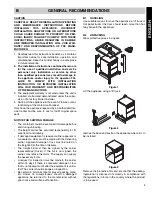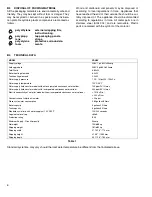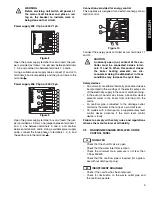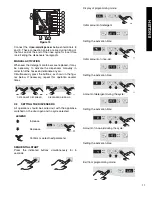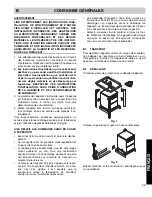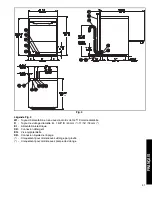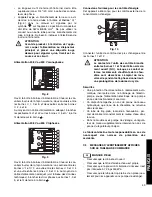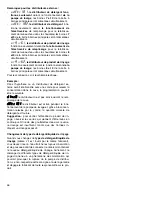
18
E
TROUBLESHOOTING
DISHWASHER DOES NOT WASH
WELL
1. Check if the suction filter is dirty, if so clean it thoroughly.
2. Check if the wash jets are clogged by solid food particles.
3. Check that the initial amount of detergent or subsequent additions are cor-
rect.
4. The selected wash cycle is too short. Repeat the cycle.
5. Check that the tank temperature is between 131°F/50°C and 150°F/65°C.
6. Check that the dishes are stacked correctly in the racks.
GLASSES AND DISHES ARE NOT
DRIED PROPERLY
1. To be performed by authorized service technicians: check the instructions
for the amount of rinse-aid.
2. Check that there is rinse-aid in the container and if necessary top off level.
3. Check the set amount of rinse-aid (see “setting the dispensers” para-
graph).
4. Check that the water temperature is between 176°F/80°C and
194°F/90°C.
CONDENSATION ON GLASSES
1. Check that there is rinse-aid in the container and if necessary top off level.
2. Check the set amount of rinse-aid (see “setting the dispensers” para-
graph).
3. Remove the rack of glasses immediately the cycle has ended.
STAINS ON THE GLASSES
1. Only use “non-foaming” products for professional dishwashers.
EXCESSIVE FOAM IN THE TANK
1. Check that the wash water temperature is not less than 122°F/50°C.
2. To be performed by authorized service technicians: check if the amount of
product dispensed by the detergent dispenser is excessive.
3. Ensure that the tank has not been cleaned with unsuitable cleaners. Drain
the tank and rinse thoroughly before new wash cycles.
4. If a foaming detergent has been used, drain and refill the tank with water
until the foam disappears.
SMEARS OR SPOTS ON THE
GLASSES
1. Reduce the amount of rinse-aid (see “setting the dispensers” paragraph).
THE WASH OR RINSE ARMS
TURN SLOWLY
1. Remove and thoroughly clean the arms.
2. Clean the wash pump suction filter.


